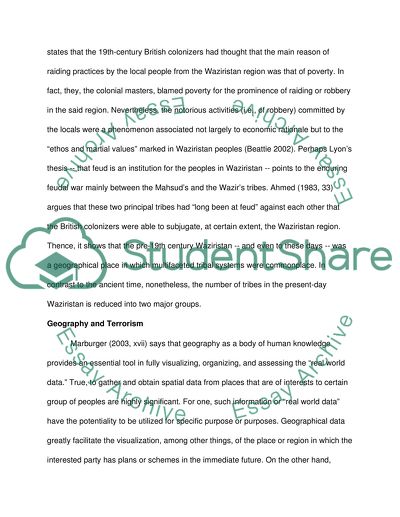Cite this document
(“Waziristan: Geography of Modern Terrorism Research Paper”, n.d.)
Retrieved from https://studentshare.org/family-consumer-science/1410441-waziristan-geography-of-modern-terrorism
Retrieved from https://studentshare.org/family-consumer-science/1410441-waziristan-geography-of-modern-terrorism
(Waziristan: Geography of Modern Terrorism Research Paper)
https://studentshare.org/family-consumer-science/1410441-waziristan-geography-of-modern-terrorism.
https://studentshare.org/family-consumer-science/1410441-waziristan-geography-of-modern-terrorism.
“Waziristan: Geography of Modern Terrorism Research Paper”, n.d. https://studentshare.org/family-consumer-science/1410441-waziristan-geography-of-modern-terrorism.


